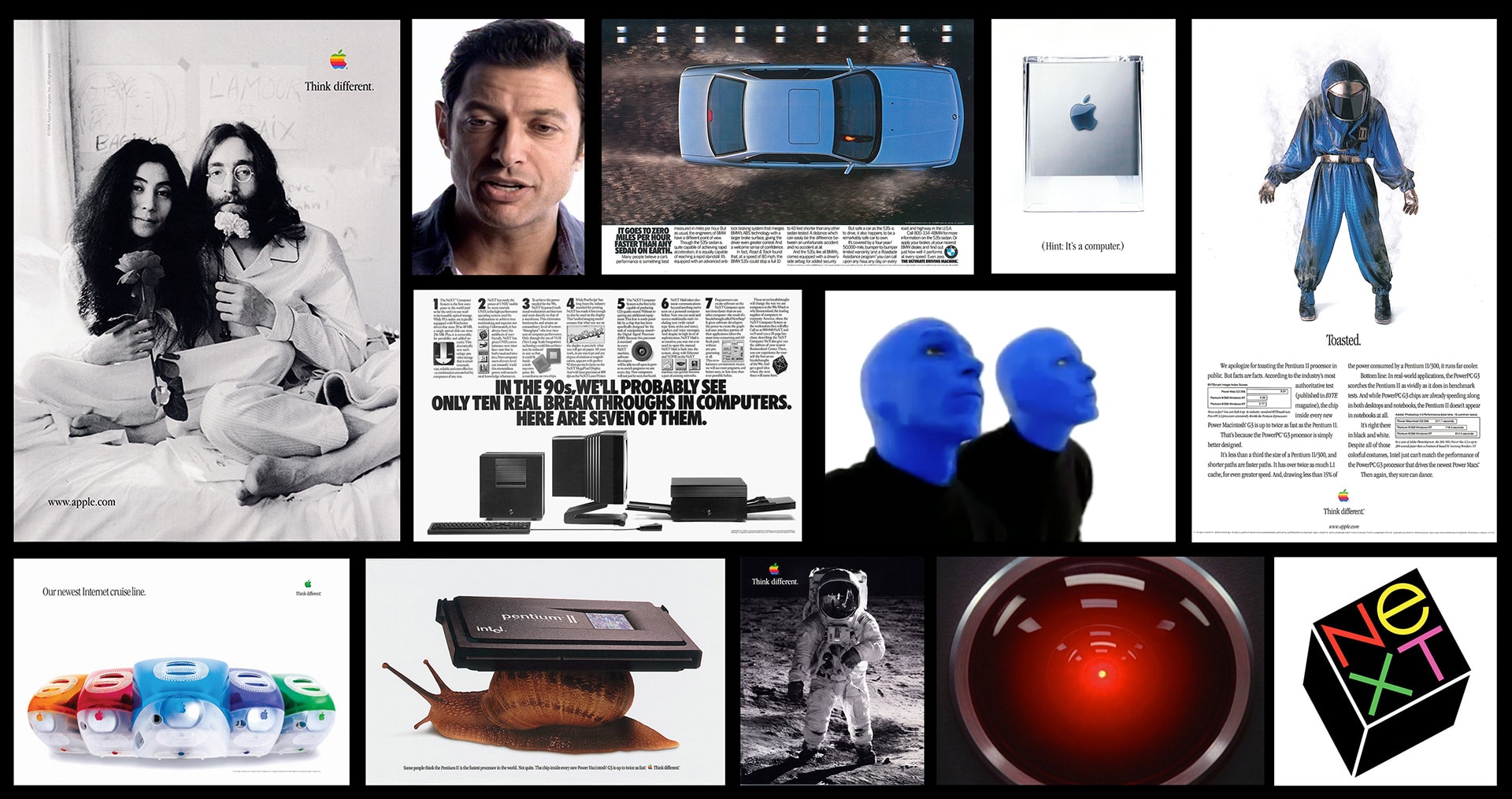
Fortunately, I have more to show for my advertising work than I do for my drumming. I’ve served as global agency creative director on behalf of Apple, NeXT, IBM, Intel, Dell and many others—largely a result of my own obsession with technology.
In addition to my keynote speeches, I’m still a creative consultant for companies in need of strategy, branding and product naming. The only thing that changed over the years is that I’ve become more finnicky. I only work with (a) people I like and (b) products I love. If you have the need, feel free to contact me.
Here are a few favorite moments from my time on Apple, along with notes of explanation.
Having worked with Steve for eight years as agency creative director for NeXT, and being a veteran of three previous stints at Chiat, I eagerly rejoined the agency to lead the creative team on Apple.
This was a bleak time for Apple, which had not been profitable in years. In fact, it was near bankruptcy. With the introduction of iMac at least eight months off, and we set out to create a brand campaign. Think different was designed to remind the world what Apple stands for, re-inspire Apple employees and create a foundation upon which future technology would be launched.
The campaign ran. Revolutionary products followed. The rest is history.
While most people were hassling with modems and configurations, C1 was “the easy way to the internet.” You turned it on, entered your info, and presto—you’d beconme an instant internet citizen. Impressive! (For its time.)
Like all things in Steve’s world, every detail had to be perfect, starting with the name. Inexplicably, Steve was enamored with one name in particular: “MacMan.” The only way to talk him down was to come up with something better.
It didn’t happen immediately. Steve hated the name iMac in our first presentation, and disliked it in the second (a step up!). Only after he put the name on a model did he warm up to the idea. Design-wise, the short name looked terrific on the machine.
I wish I could say we were all so smart that we knew how that little i would help change Apple’s fortunes. In debating with Steve, we could only say it had “potential” as a foundational naming device. Sure did.
My one-and-only Super Bowl spot was also for Apple. It wasn’t quite the game-changer that 1984 was. I include it here simply because it was so much fun to write and produce, and it came at a troubling moment in tech history.
As 2000 approached, businesses were obsessing on the Y2K Bug. PCs weren’t designed to properly handle the change from 1999 to 2000, and it was feared that millions of PCs would fail at the start of the new century. Billions of dollars were being spent to avoid possible disaster.
When Steve Jobs told us that Macintosh computers had no Y2K problem, it seemed like a good idea for a commercial. As a lifelong fan of sci-fi and Stanley Kubrick, it struck me that HAL— the menacing computer from 2001: A Space Odyssey— would make a unique spokesman for the Y2K Bug. From his vantage point in 2001, he could actually look back at the problem.
It was a long and winding road, but Apple’s HAL ultimately became the first commercial after kickoff in the 1999 Super Bowl. Read the story behind HAL’s Super Bowl moment in this blog post.